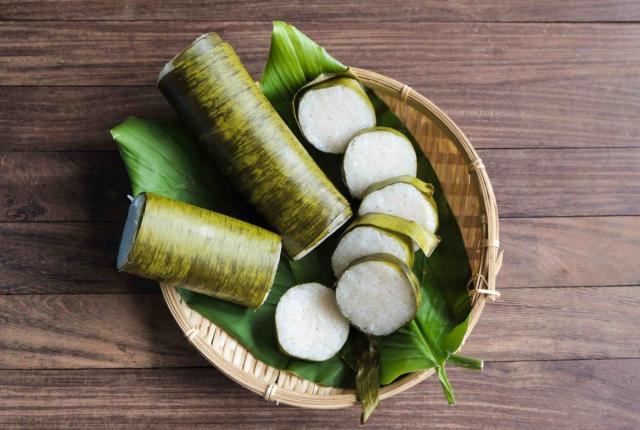Nasi Lemak: a dish that embodies the heart of the Malaysian culinary experience. This traditional breakfast meal, which has since evolved into an all-day favorite, tells the story of Malaysia’s rich cultural heritage in every bite. This iconic dish is a simple yet exquisite concoction of fragrant rice cooked in coconut milk and pandan leaves, served with an array of sides such as crispy anchovies, roasted peanuts, boiled eggs, fresh cucumber slices, and a generous dollop of spicy sambal. What makes Nasi Lemak special is its versatility; it can be tailored to suit every palate, making it a beloved dish across the nation.

Ingredients
- 2 cups of jasmine rice
- 1 can of coconut milk
- 2 pandan leaves, knotted
- 1 lemongrass, crushed
- 1 cucumber, sliced
- 2 boiled eggs, halved
- 1 cup of dried anchovies
- 1/2 cup of roasted peanuts
- 1/2 cup of sambal
Cooking Steps
- Start by rinsing the jasmine rice under cold water until the water runs clear. This removes any excess starch and helps the rice cook evenly.
- Add the rinsed rice, coconut milk, knotted pandan leaves, and crushed lemongrass to a pot. Bring this mixture to a boil, then reduce the heat and let it simmer until the rice is cooked and has absorbed all the coconut milk.
- While the rice is cooking, prepare the sides. Fry the dried anchovies until crispy, and roast the peanuts in a dry pan until golden.
- Serve the cooked rice with a side of crispy anchovies, roasted peanuts, boiled eggs, fresh cucumber slices, and a generous serving of sambal.
In conclusion, making a classic Nasi Lemak requires some effort, but the result is a flavorful dish that is sure to satisfy. The key to a great Nasi Lemak lies in the quality of its ingredients. Choose fresh pandan leaves for a fragrant aroma, and don’t skimp on the coconut milk for that rich, creamy texture. When selecting anchovies, opt for those that are bright silver and dry to the touch for the crispiest finish. Lastly, remember that the best sambal is homemade, so try your hand at making your own for a truly authentic Nasi Lemak experience. Bon appétit!



